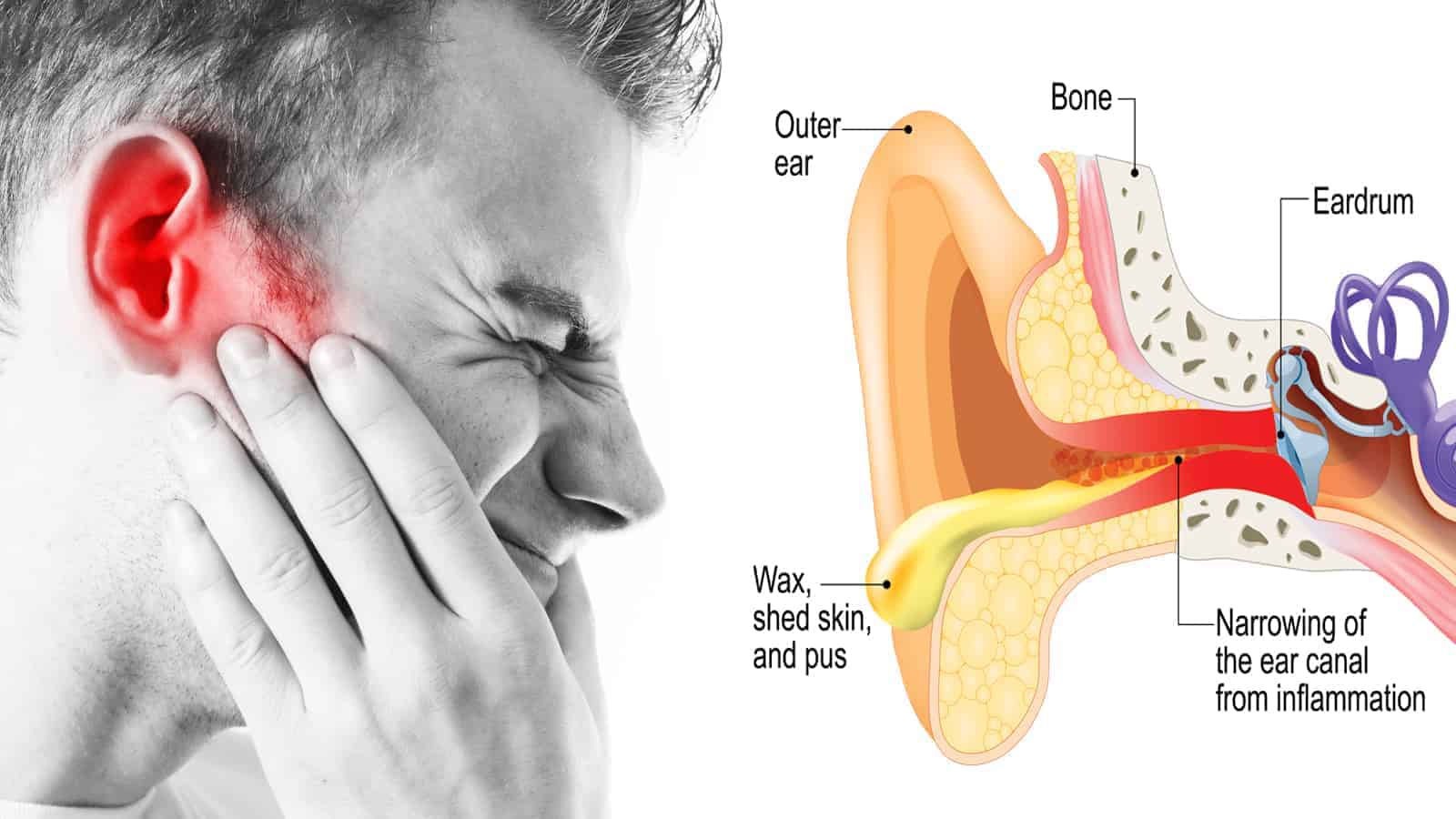

Insert the tip of the syringe into the ear opening. Tilt your head to the side as much as you can and pull your ear lobe down to open up the ear canal. Fill an ear syringe with a cup of warm water. Flushing with warm water will also help open up a clogged ear.You can also take a hot shower for about ten minutes to relieve clogged ears. cover your head with a towel and inhale the steam slowly until the clogged ear opens up. Add a few drops of tea tree oil or lavender essential oil to it. Steam can also help loosen earwax causing clogging. The steam will help thin and loosen the mucus, which in turn will give you relief from clogged ears. Inhaling steam is one of the simplest ways to get rid of clogged ears resulting from a cold.Alternatively, you can wrap a hot water bottle in a thin towel and apply it to the clogged ear for five to ten minutes to relieve the pressure and open up the clogged ear. This will help to ease pain and promote fluid drainage. Soak a washcloth in warm water, wring out the excess water and then hold the washcloth over the affected ear for five to ten minutes. The heat from a warm compress will help loosen congestion, unclog the ear and ease the pain. A warm compress is a very good natural treatment for clogged ears associated with colds or sinus congestion.If the other ear is also clogged, repeat the process with the other ear.Rest for five to ten minutes to allow the mixture to do its work.To keep the mixture from spilling out, place a cotton ball in the ear and do not raise your head.Lie down on your side and use a dropper to put a few drops of this mixture in the affected ear.Mix equal amounts of alcohol and apple cider vinegar.To make an appointment for an ear exam, call 70. For specific medical questions, please consult your physician. This blog is for informational purposes only. While care from one of CEENTA’s ENT doctors is the premier way to treat ear issues, these remedies are a good way to ease some of your discomfort from ear pain while that care kicks in.


Some people find alternating heat and cold also relieves pain. Heat or cold will work best if you determine which type of pain you have. Make sure to never apply ice or a cold pack directly to the skin, and make sure it’s not so cold it hurts. Use a cold pack: Conversely, some find that a cold pack offers more relief if the pain is from inflammation. If your child uses a heating pad, make sure they have adult supervision. Make sure it is not unbearably hot, you don’t leave on it for more than 20 minutes, and you never fall asleep with it on. Use a heating pad: Heat can reduce pain if you have a muscle spasm. However, it’s not safe to give aspirin to babies and young children, so consult a doctor before giving painkillers to your children. Take over-the-counter medicine: pain medicine like ibuprofen or aspirin can help relieve the pain of an earache. If you are looking to safely ease your pain or discomfort, there are three remedies you can try at home: The American Academy of Otolaryngology has come out against them because not only are they ineffective, but they can worsen your condition and cause serious injury. One thing you should definitely not do is use ear candles, Dr. “For example, if you have an ear infection and your eardrum bursts, you could potentially be putting dirty material into your middle ear,” Dr. Kelly said you should avoid ones that involve putting anything in your ear because you could cause yourself further harm. While there is a variety of ear pain remedies online, Dr. If you have pain and significant hearing loss or dizziness, that’s an indication you should go straight to an ENT instead of a primary care doctor, CEENTA Otolaryngologist Timothy Kelly, MD, said.

Untreated ear infections, for example, can spread to other parts of the body, and can cause ear damage or dangerously high fevers. If you don’t go to the doctor for a correct diagnosis and medical care you run the risk of making yourself sicker. However, it’s important to note that there are many causes for earaches – particularly in adults – such as referred pain from allergies, sinuses, toothaches, or even cancer. But are any of them safe?īefore you do anything to help your ear pain, it’s important to go to a doctor and find out the cause first rather than self-diagnose.Įar infections are the most common cause of ear pain among children and young adults, and are usually caused by bacteria moving into the ear. You go on the Internet and read about a lot of different ear treatments. You make a doctor’s appointment for that afternoon, but your ear still hurts. You wake up one morning with a sharp pain in your ear.


 0 kommentar(er)
0 kommentar(er)
